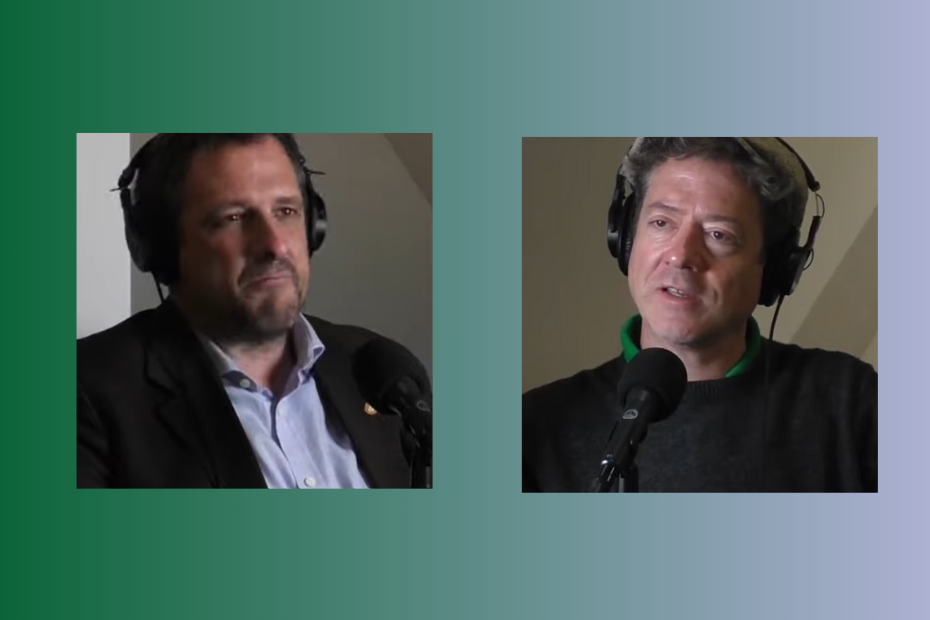
By Marcus Brancaglione
Marcus is Founder and current President of the NGO ReCivitas, a think tank that develops innovative social technologies, widely published academic journals, books, conference materials and university extension courses and extension publications (developed through classes under his professorship). Since 2008, he has worked on the development of policies regarding Basic Income Guarantee, referenced in international non-governmental social security in Quatinga Velho. Marcus is the creator of the social network of Direct Democracy: Governe-se, and the intellectual property RobinRight license.
Seasteading is about diversity, the views expressed in this commentary are the author’s own. May the best ideas prosper through voluntary relationships.
Rediscovering the New World
I have no doubt that the Seasteads can both serve as an emergency solution to the humanitarian refugee crisis and, in the future, be one of the determining factors of a long-term solution. But all that depends on what exactly is the grand plan of Seasteading not only towards solving the refugee crisis, but towards addressing the future of the whole planet.
Seasteads can easily allow for impoverished and dispossessed people to start life over, as long as their physical, political, economical and legal designs aim for that goal. Translating the chosen mission of a Seasteading project to its architecture and how it touches every aspect of life, including all social, human relationships, is what will determine whether that project will be a colony of the marginalized and the degraded, or a tax haven of the privileged, or a mixed territory of different classes or, in fact, a new world for its pioneers, be them refugees or not.
The colonization of new worlds, be them unknown continents, planets, or even the truly unexplored cosmos that are our oceans, does not happen by accident, or as a pirate’s “adventure.” Of course, Seasteading evokes the romantic visions of pirate utopias that are so popular today among technologists: that idea of liberation as a kind of escape from spaces, regimes and territories that are completely occupied, depleted and dominated, into a sea that represents the hope of discovery and of foundation of a new world that is free from the old. But that is just a first, superficial impression of Seasteading. The Seastead is not an utopia, but a concrete proposal for colonizing the sea. It is a project that is fully within the historical context of our current times. Note that, historically, those processes of colonization happened in times of systemic political, economic and populational crises, which are exactly the ones we are facing right now in the Continents.
By drawing a parallel between the contemporary project of Seasteading with the exploration and colonization of the “New World” we can see the importance of defining the historical mission of that project that, without a shadow of doubt, must be guided by humanitarian and ecological principles not only to fulfill its duty, but to avoid falling into the traps inherent to colonizations: the political, commercial and fiscal use not only of classes of people, but even of entire peoples and races. It will all depend on the character and on the statute of those maritime colonies. Will they be colonies of exploitation, or of exile, or of occupation? Or will they constitute themselves in fact as the first Libertarian colonies of the world? Will they be the project of new worlds, new artificial territories created to serve as new lands or new homes for humanity, starting with the people that have no land or home and therefore are the ones that most need them?
If the intent of the big metropolises of the world and of the Continent’s investors is to get rid of marginalized peoples and individuals, or to take advantage of their vulnerability and use them as primitive pĺaceholders for a legal occupation of virgin territories, or to even use them as cheap labor for economic, commercial exploitation of the sea’s riches, then we will just have the high-tech version of the old colonies we have always known. But if, on the other hand, we have learned from our past mistakes and are ready to go through that process following new values and applying completely new techniques that are absolutely focused in human development, then we will in fact have multiple world-building experiences.
So, in that sense, it doesn’t matter whether Seasteads will be built to respond to an emergency or whether they will be implemented in the long term, as the principles that define their political and social architectures must be the same, for the more these platforms are treated as republics and the more people’s established relationships are democratic, less refugees and more citizens with full rights will be the pioneers of these artificial territories.
The more the status of “citizen” actually grants political and economic participation power to people who all must obviously have a public right to full enjoyment of whatever land they live in, and the more the pioneer is granted the natural right of Lockean appropriation of that artificial territory that he inhabits, then greater will be the dignity and freedom of his living condition and the more that new world will be constituted as a truly free democratic republic and less as a colony of the old continents. And it will therefore be less vulnerable to the evils of social inequalities between rich and poor and between races, and even the evils of fiscal bureaucracies.
In natural territories, and especially the virgin, vacant ones, that process is technologically simpler, given that the riches that make up both private property and the common good are naturally given. On the other hand, part of the creation process of a new, free artificial territory, be it on the sea or in other inhospitable places, consists in emulating the ecological process of provisioning the vital needs of its environment as a common good. That level of provisioning, if not abundant, has to be at least sufficiently accessible and unconditionally distributed to all (Basic Income). And that provisioning has to simultaneously allow an economy to develop, starting from the individual capacities and dispositions to create, innovate and produce, generating riches by way of exploring and harvesting the sea, in order to allow that economy to trade with the continents (Private Property).
Thus, the Seastead becomes not only a refuge for people who have nowhere to live or that just no longer want to live on the Continents. It also becomes a new territory that is capable of by itself completely sheltering all human and national rights, regardless of whether it is a territory federated to a larger Nation or whether it is a fully independent one.
In short, the humanitarian solution that a Seastead can provide is based on its statute of the inhabitant, by establishing that all dwellers are no longer refugees, and instead are now citizens of that territory. That citizenship is not only recognized in law by a political-legal constitution, is in fact enabled by the Seastead’s socioeconomic and technological architecture. It grants the right of citizenship that the refugee does not have and desperately seeks in other factual and legal nations, both as a way to regain control of their own lives and of their private assets. and as a way to participate in sharing control of what is considered the common good of humanity, starting with that of the territory itself. Rights as a statute of equality in a shared humanity. Rights as a provision of vital means in order to guarantee the basic conditions for human dignity.
As for whether Seasteads can aggravate, complicate or get involved in political conflicts, that will depend on their statutes and their geopolitical positions. One of the strategic advantages of these platforms, that will depend greatly on their ecological and technological autonomy, is the possibility that they may establish themselves legally outside and physically distant from the epicenters of political conflict and of power disputes, in such a way that the rewards for involving or even attacking their populations may not cover the political and economic costs of such endeavors.
In other words, putting aside political will, the great challenge is purely technological. We already know how to start entirely new political regimes and new socioeconomic systems. We have all of the innovation, all of the projects and all of the experiences needed to improve upon and to overcome the current crises of capitalism and of democracy through humanitarian solutions. Not only we have all that knowledge and all these tools to solve those crises in the continents, but also in the spaces beyond them.
Thus, Seasteading is not a solution to this or that political, ecological or humanitarian problem, and it is not and should never be merely a refuge for the excluded or the privileged. Instead, it is and should always be the platform where all those immediate solutions are developed and applied not only to benefit those who live in them, but also those that, in the continents, may in the future copy the sociopolitical technologies that are piloted there.
I’d say that this libertarian and humanitarian vision that resonates with the historical mission of Seasteading is the grand plan that we have to help the world to exit the present humanitarian crisis, both as an emergency solution and as a solution to the crisis of future perception. At first, it provides small islands of security and liberty, first to those who have absolutely none of neither, giving a new world and a future to those who have neither. And after that, it gives to all an alternative both of place to live and of a way of coexisting in peace, be it on land or on the sea.
That is the potential I see in Seasteading, and that is why I am with them.
You have also asked about what I think will happen. I believe that as today’s refugees hold actual political and economic control both of their territories as well as their own possessions and lives, wielding direct decision and participation power in the natural or artificial common good as capital, and when they are full citizens with rights to self-determination and individual sovereignty, then they will be free and will have a place to live that is much better even than the richest citizens of the first-world. What is an utopia in the continent may be very well the reality in any other place of the world where monopolies don’t exist, especially those over violence and over the common good.
I am unaware of any ongoing projects, but one of the concrete proposals that have surfaced and that presents similarities to the Seasteading proposal is that of the Greek islands. On that topic I have elaborated on concrete organization proposals, but the fundamental element in realizing a theoretical project into a democratic and libertarian experience in practice is the work of creating the experience as its own empowering educational process, so that the refugees will constitute themselves as citizens through exercising collective decision-making and thus themselves defining the rules of their own society while, of course, respecting the principles of consensuality between all parties and thus respecting the universal human rights and producing peace.
But that gets into another stage of realizing these projects: the pedagogical operations that make up field work activities. Hearing and giving voice to the people so they may collectively decide and define their destinies is an important stage in the work of liberating people from their deprivations and their traumas, but that only comes after the first stage, the one that we find ourselves in to right now, is overcome. That is, before emancipating ourselves, we first must (re)discover America. Because it is more than a humanitarian crisis that humans are facing. The refugee question is actually a crisis of our humanity.
